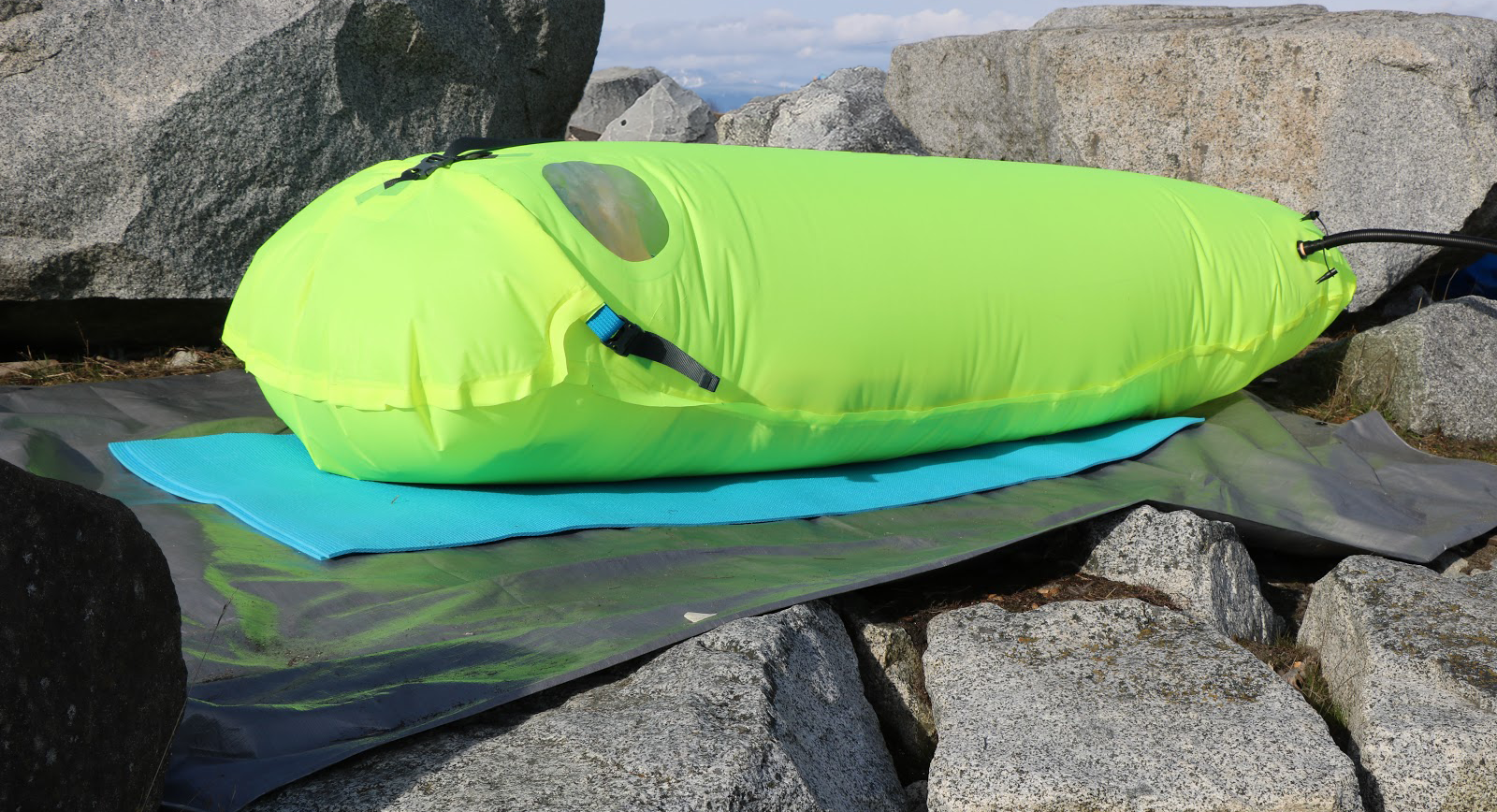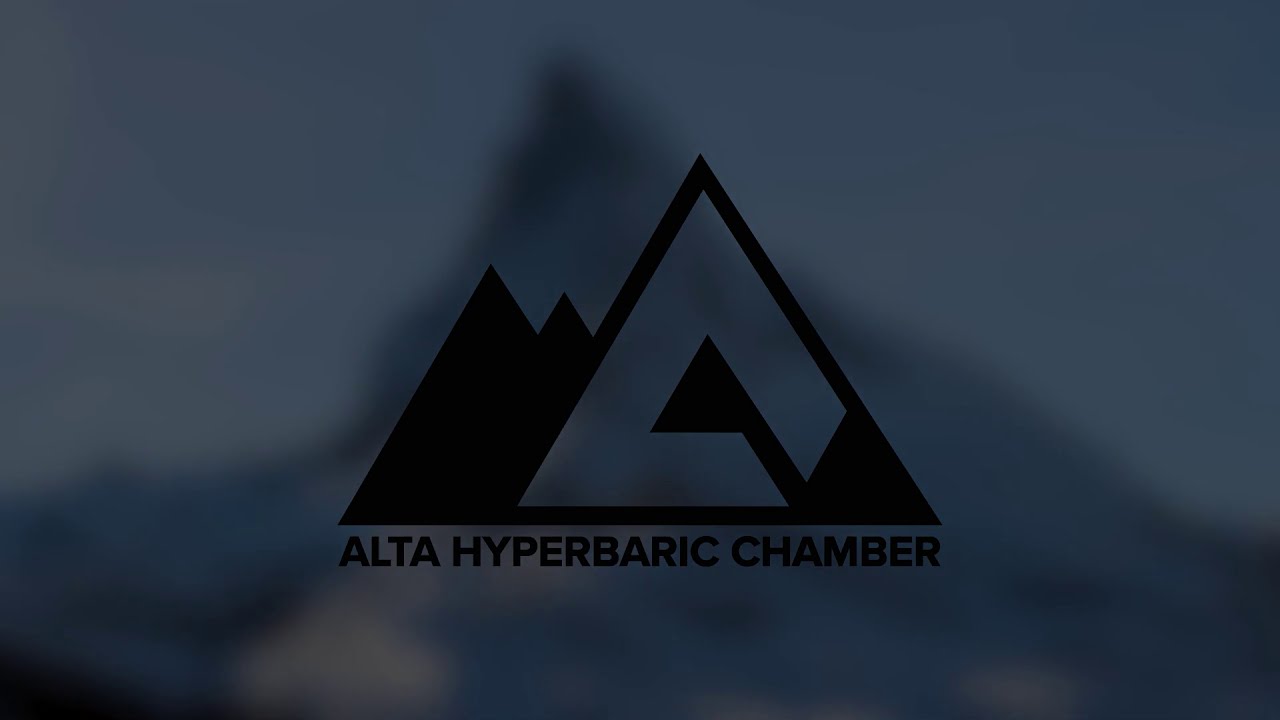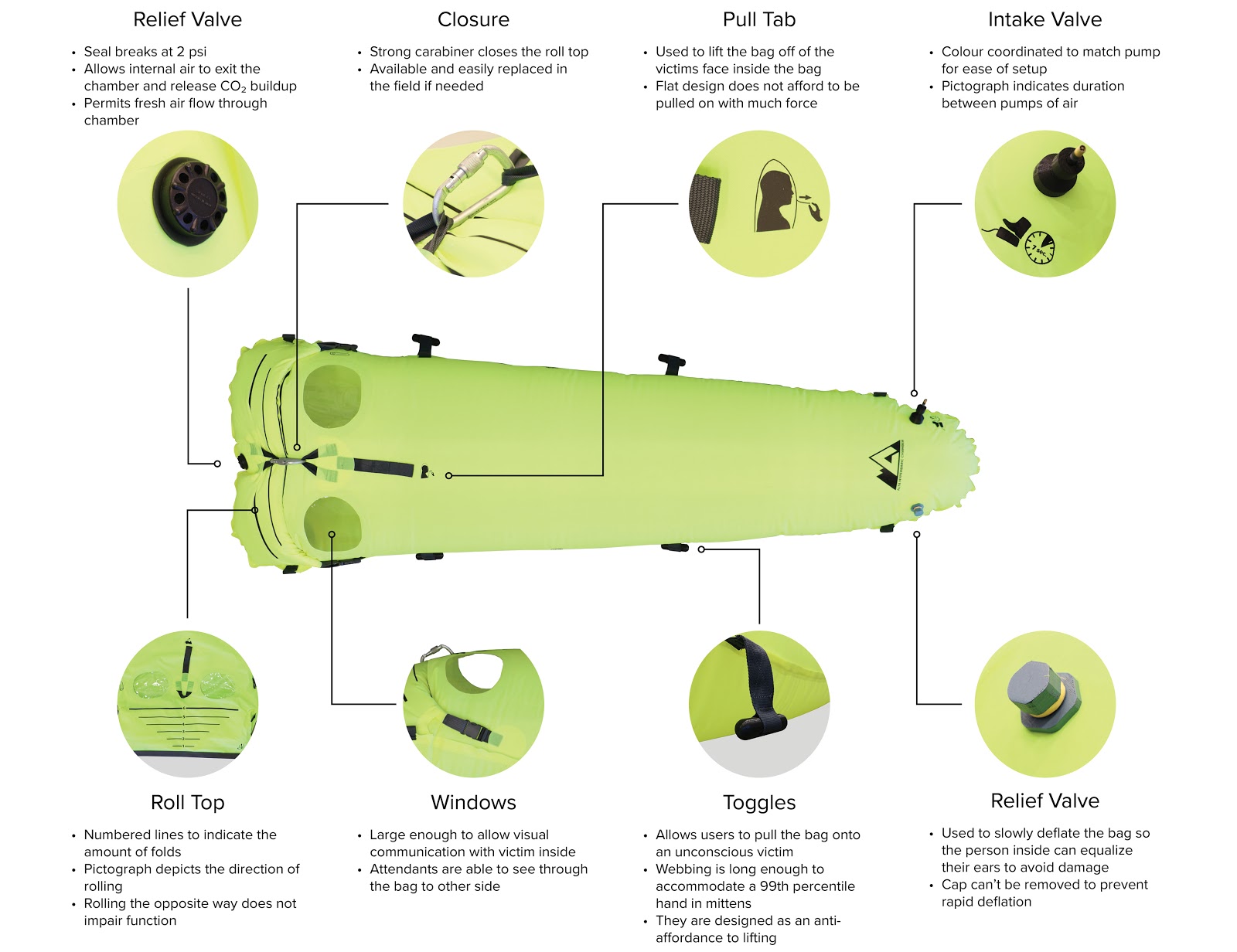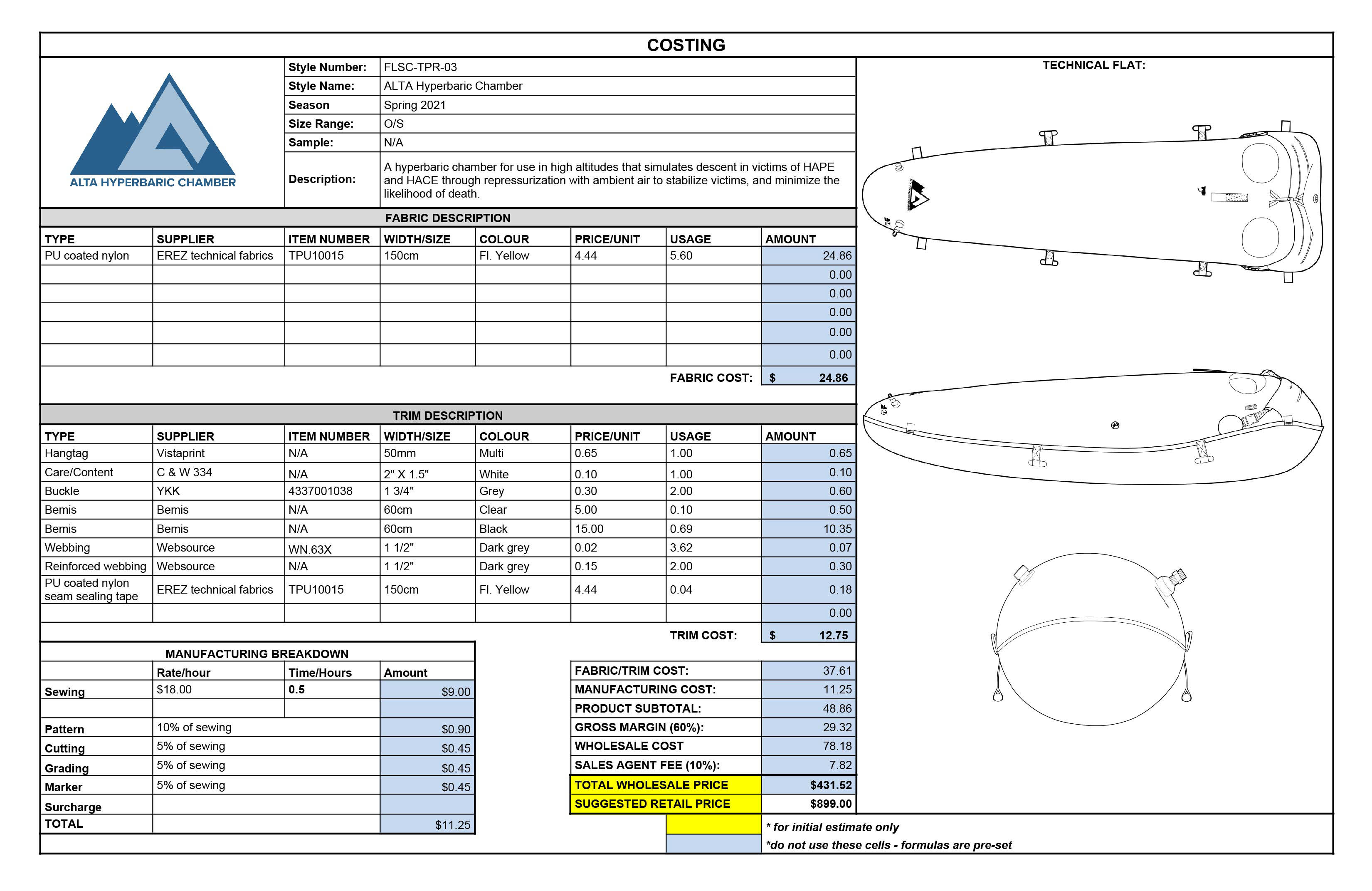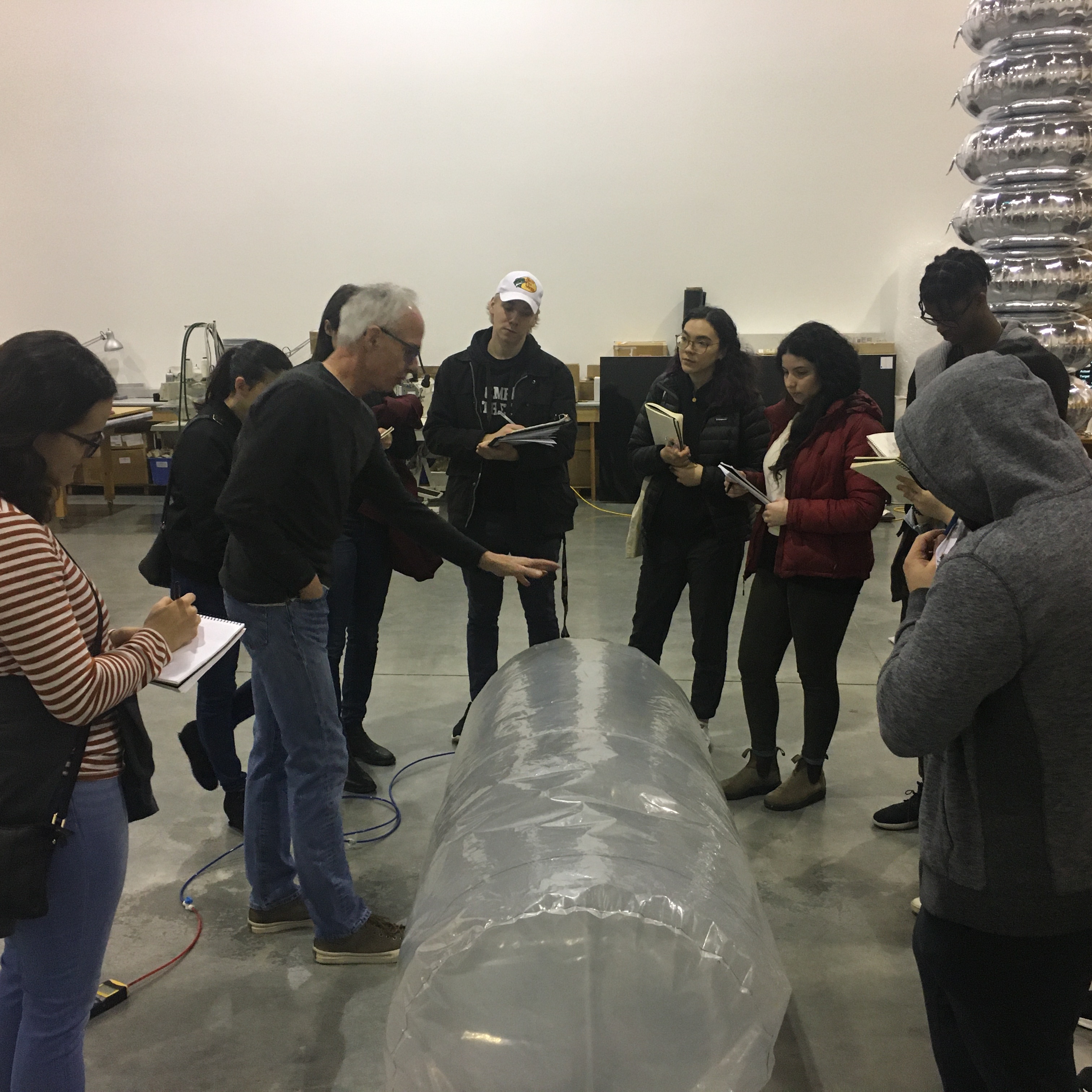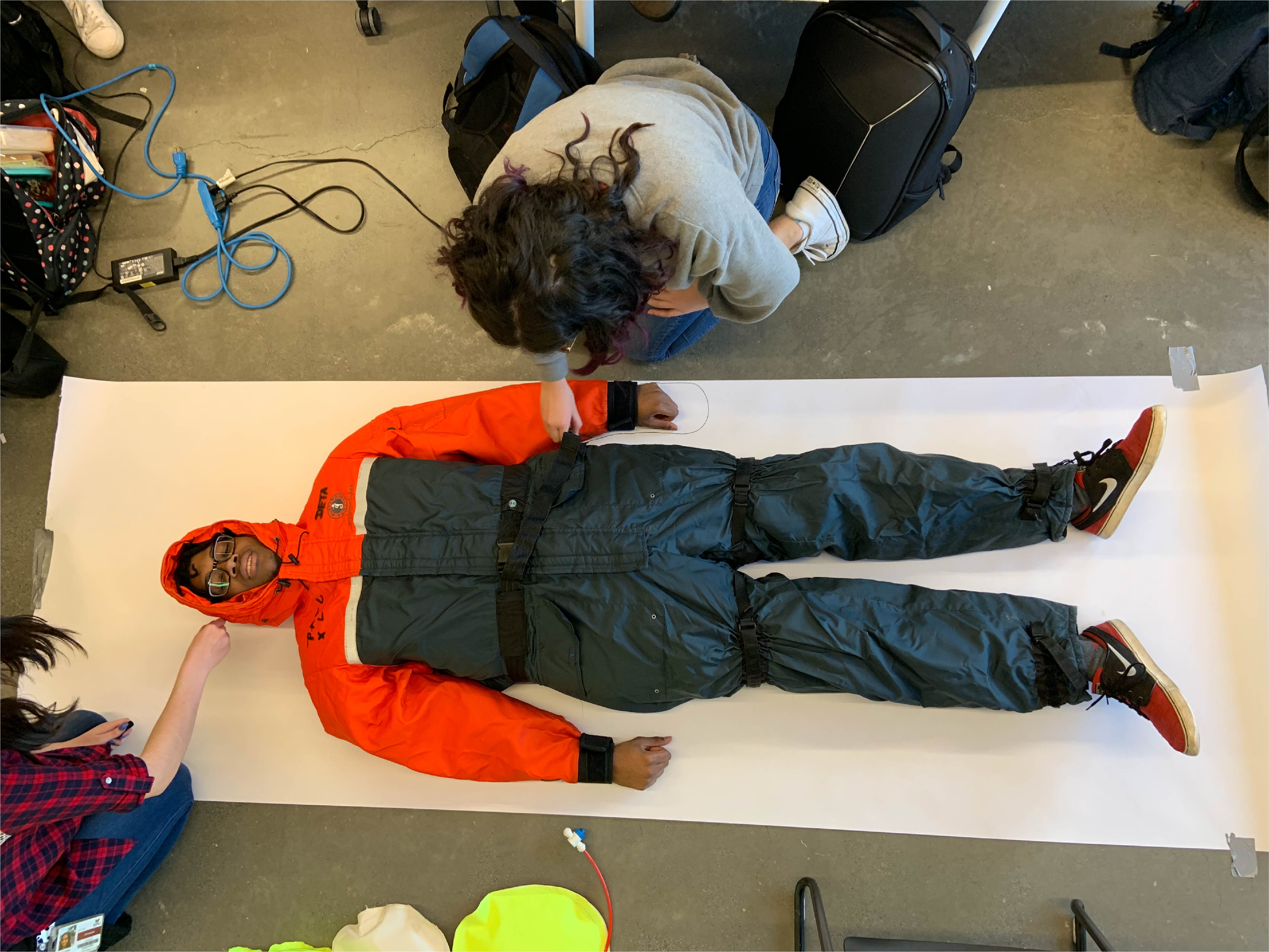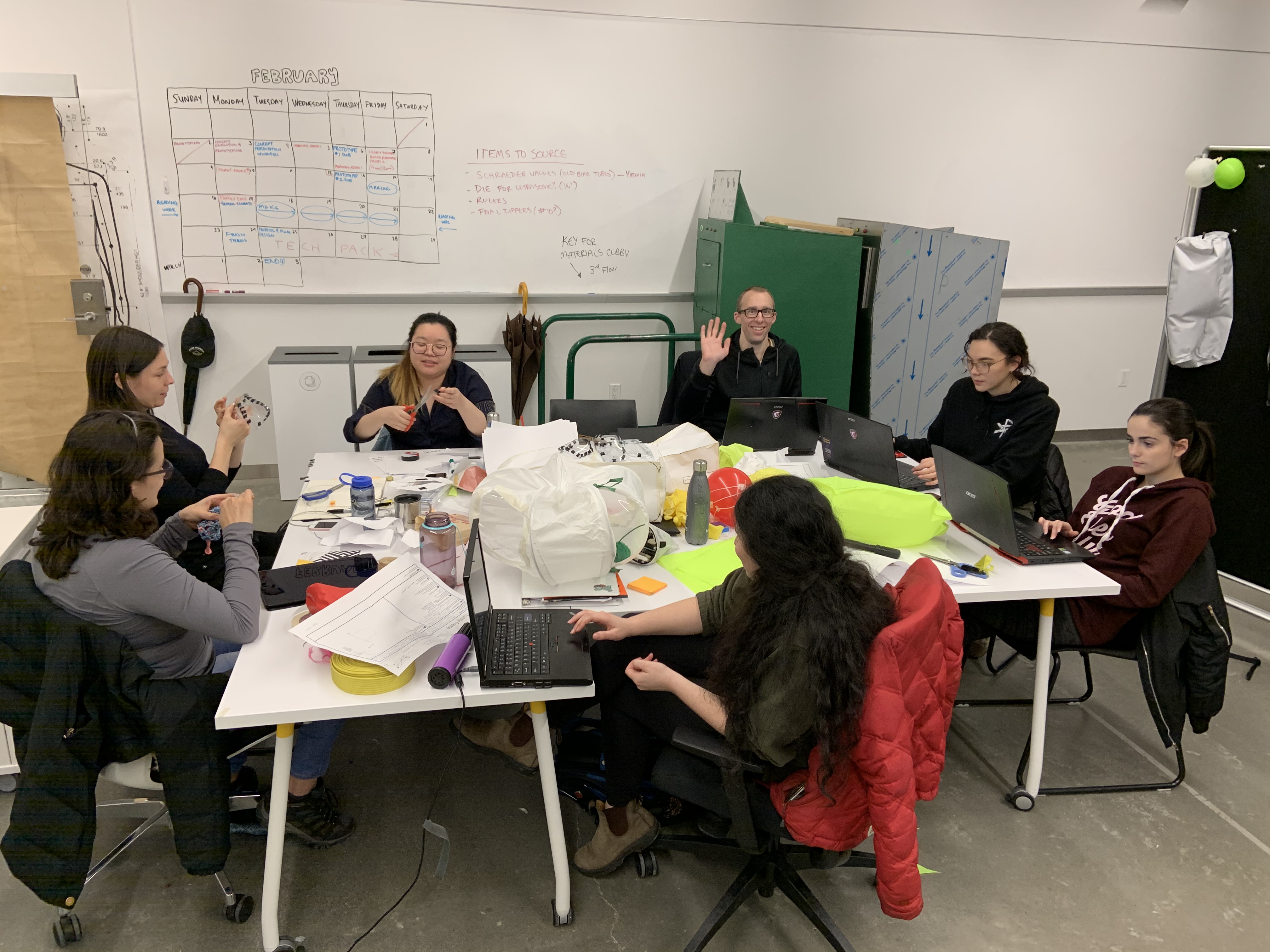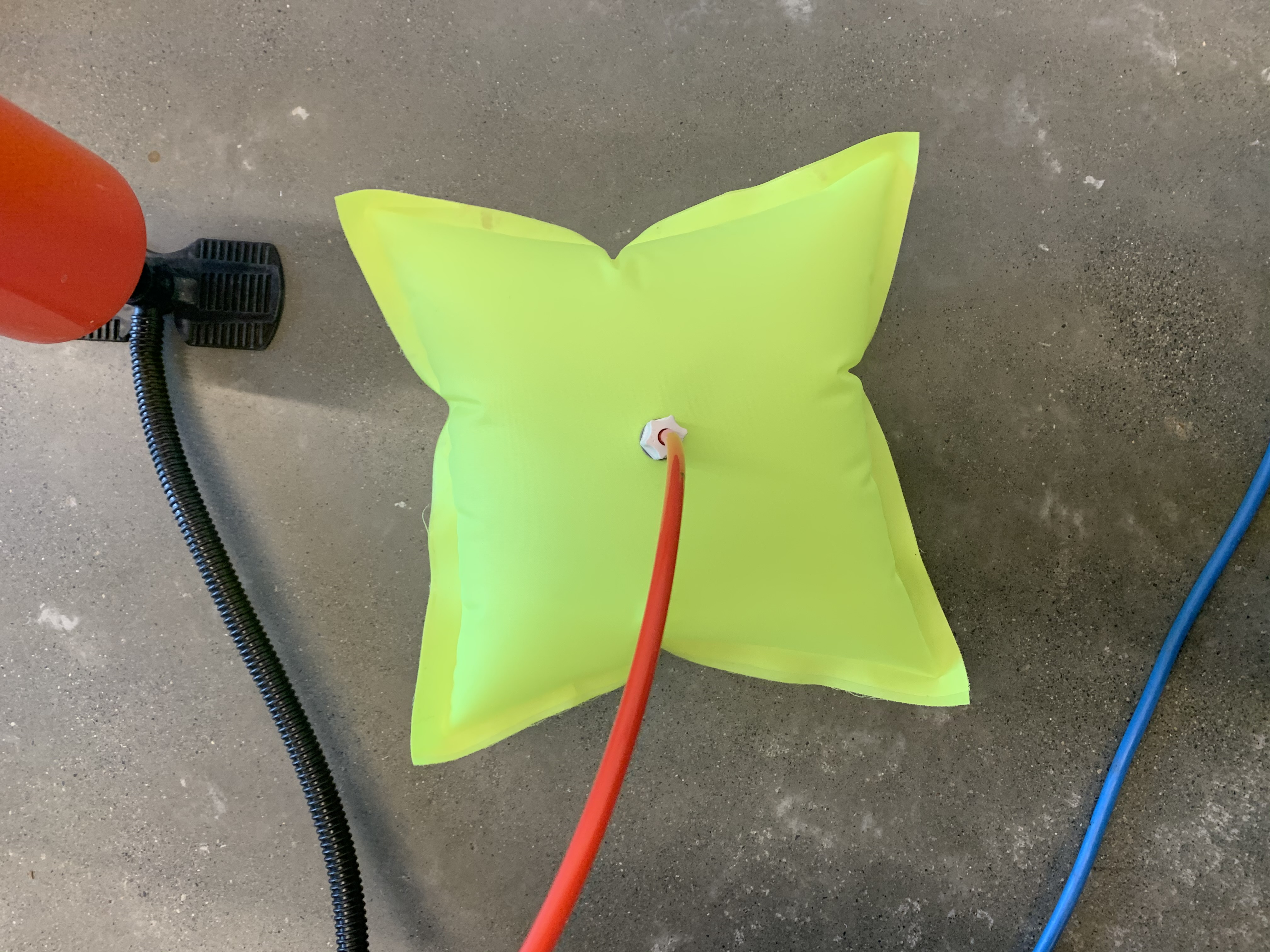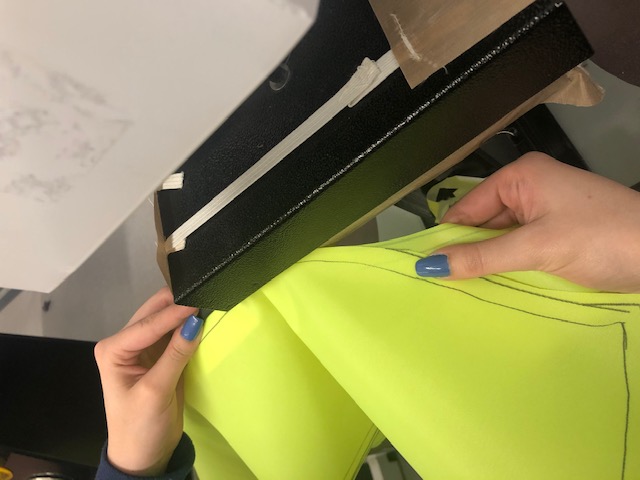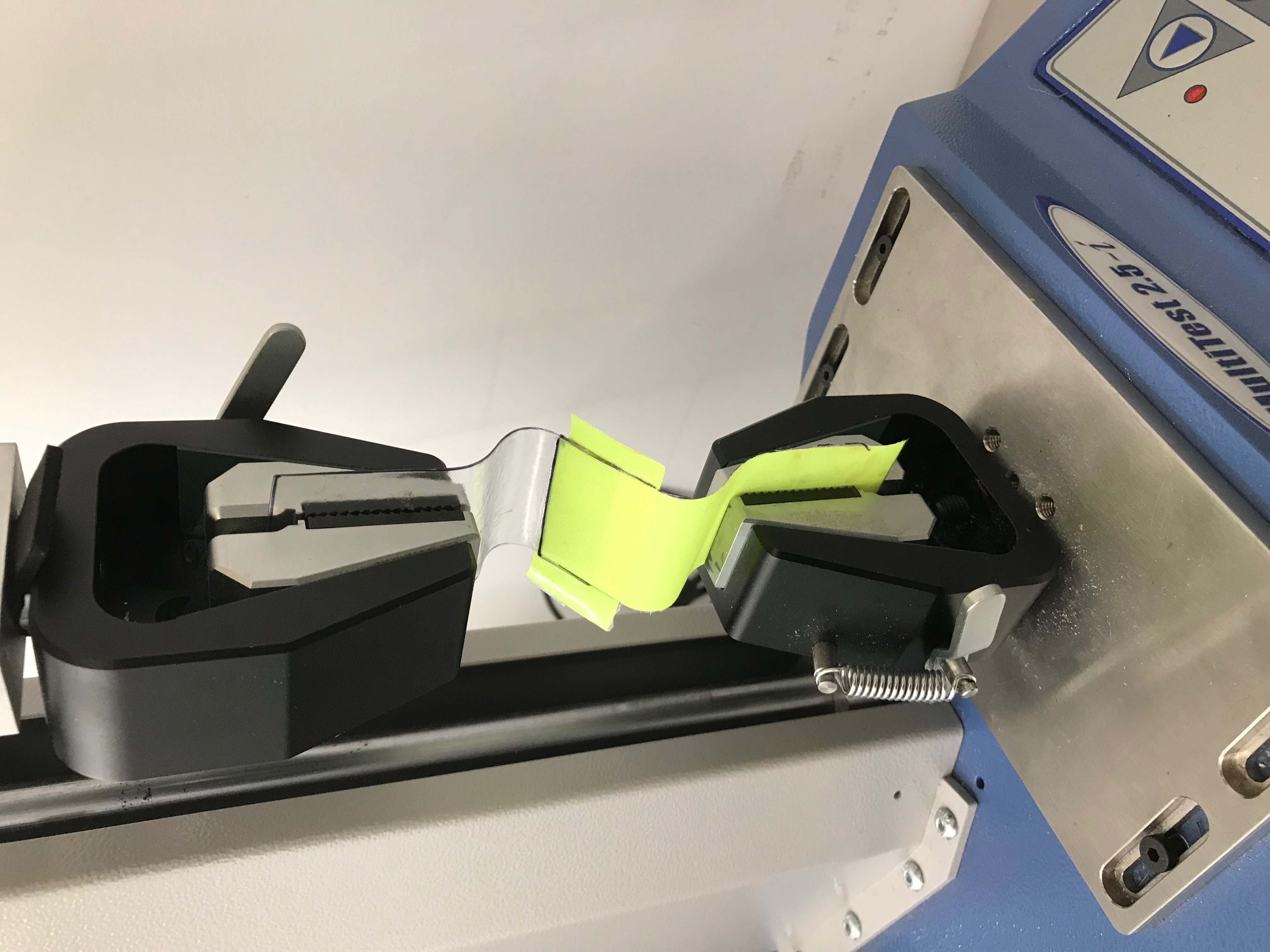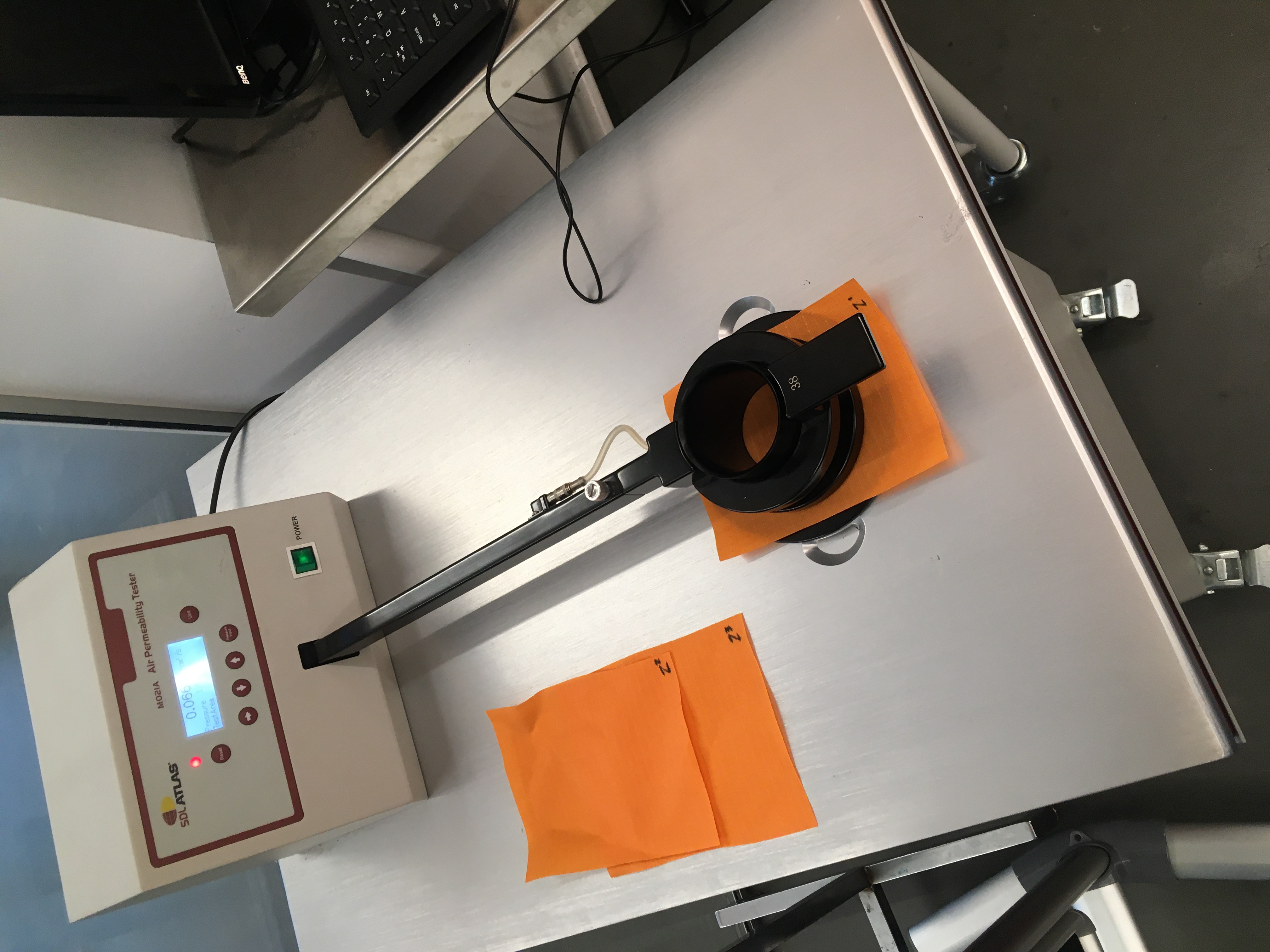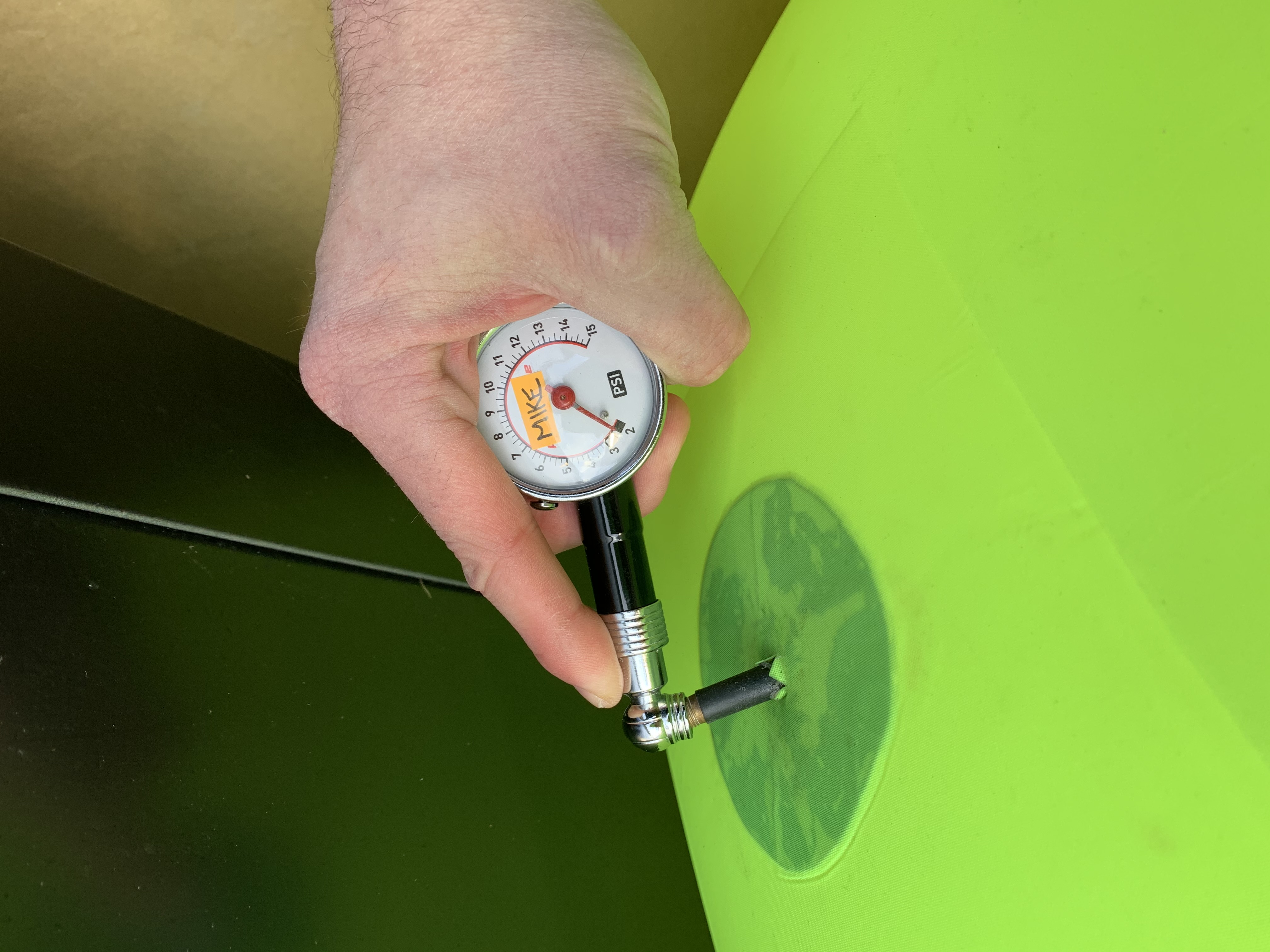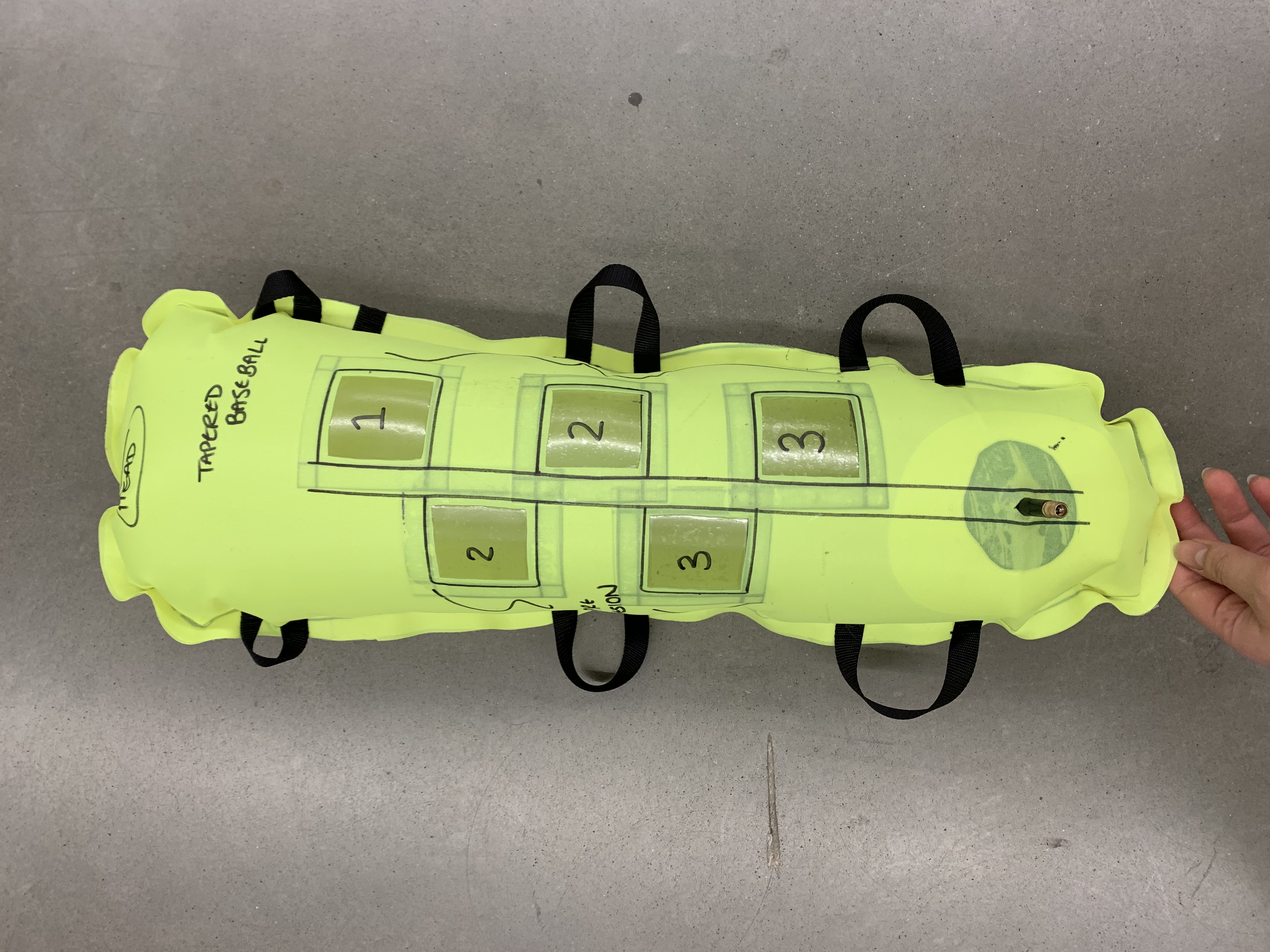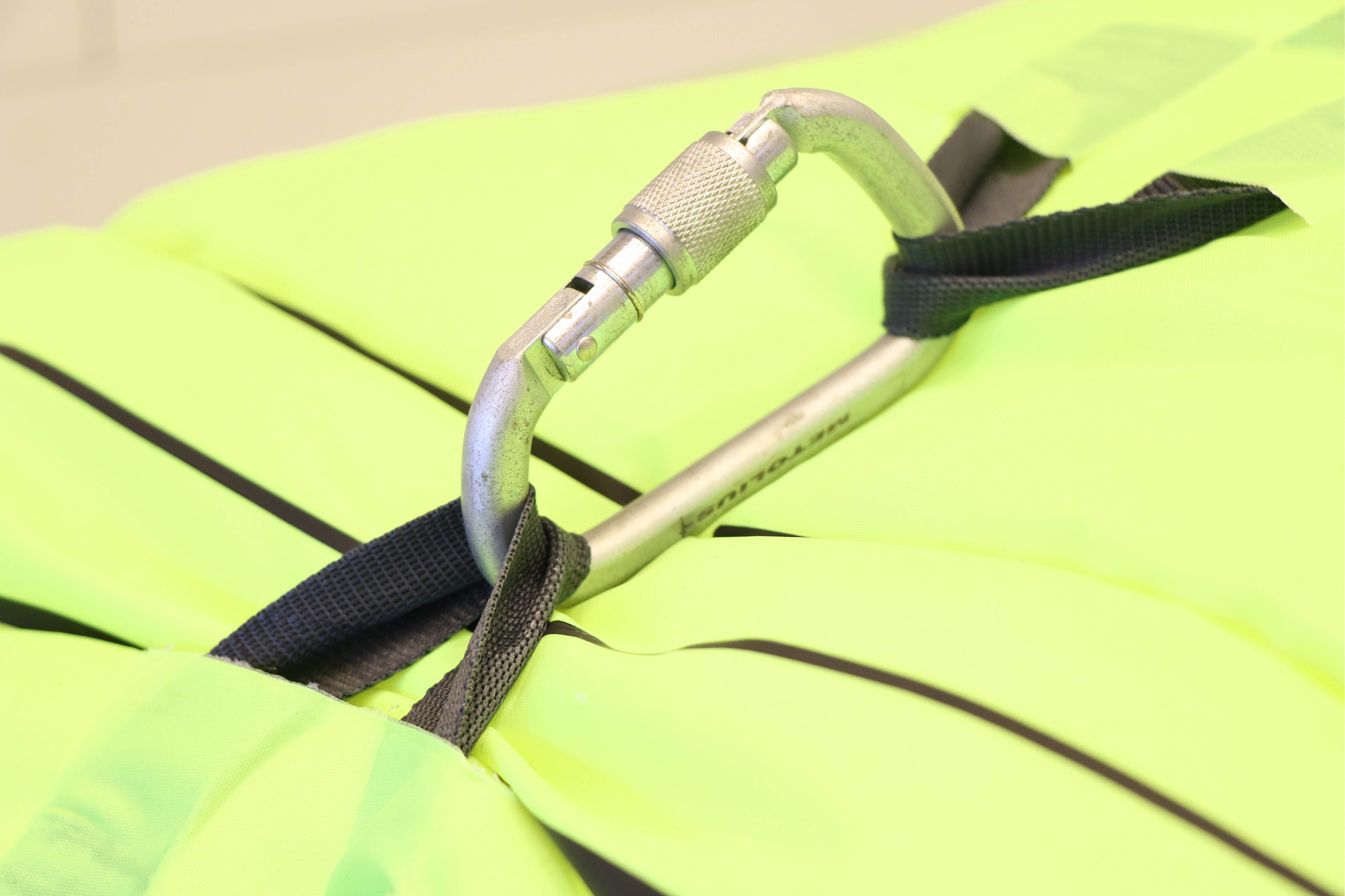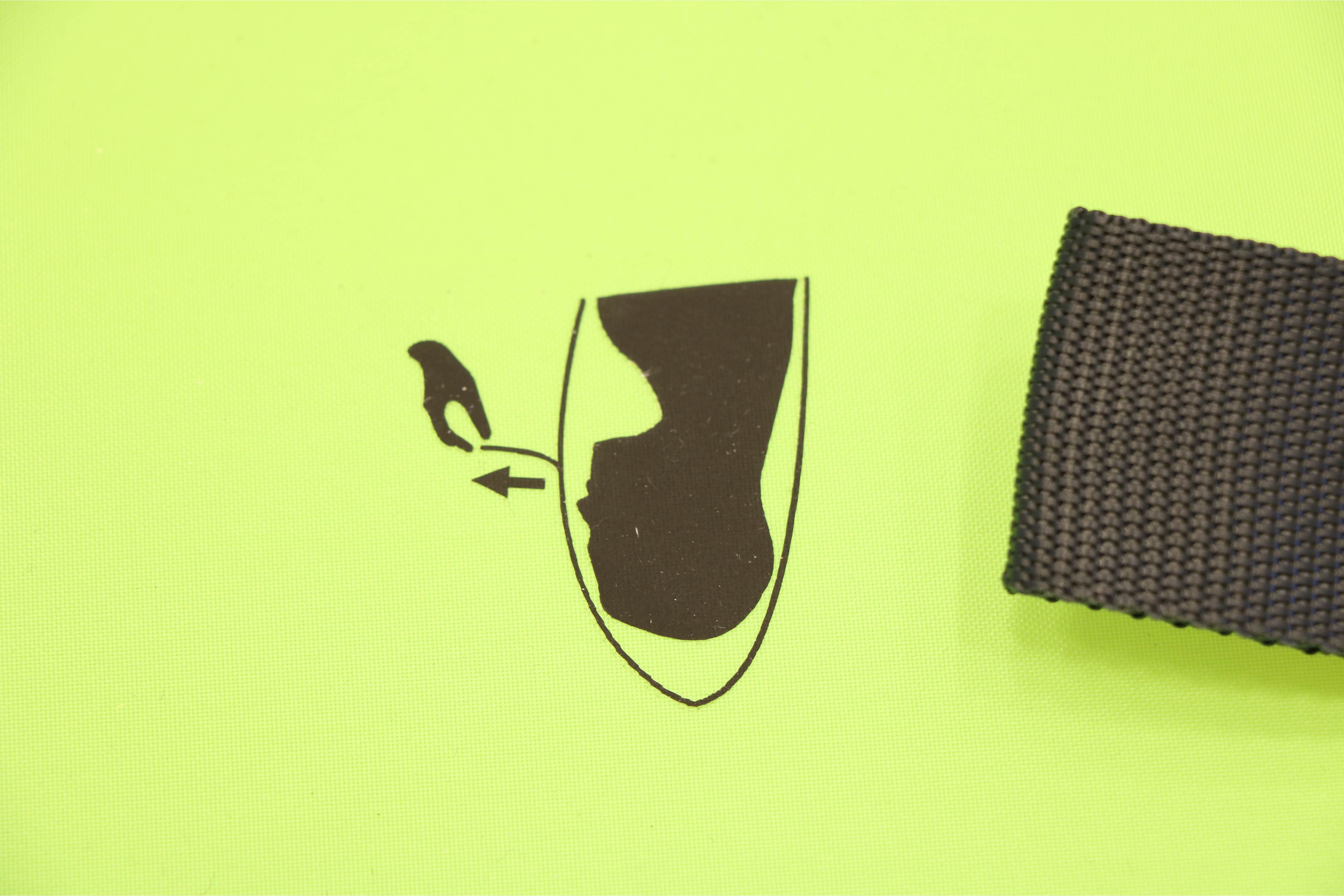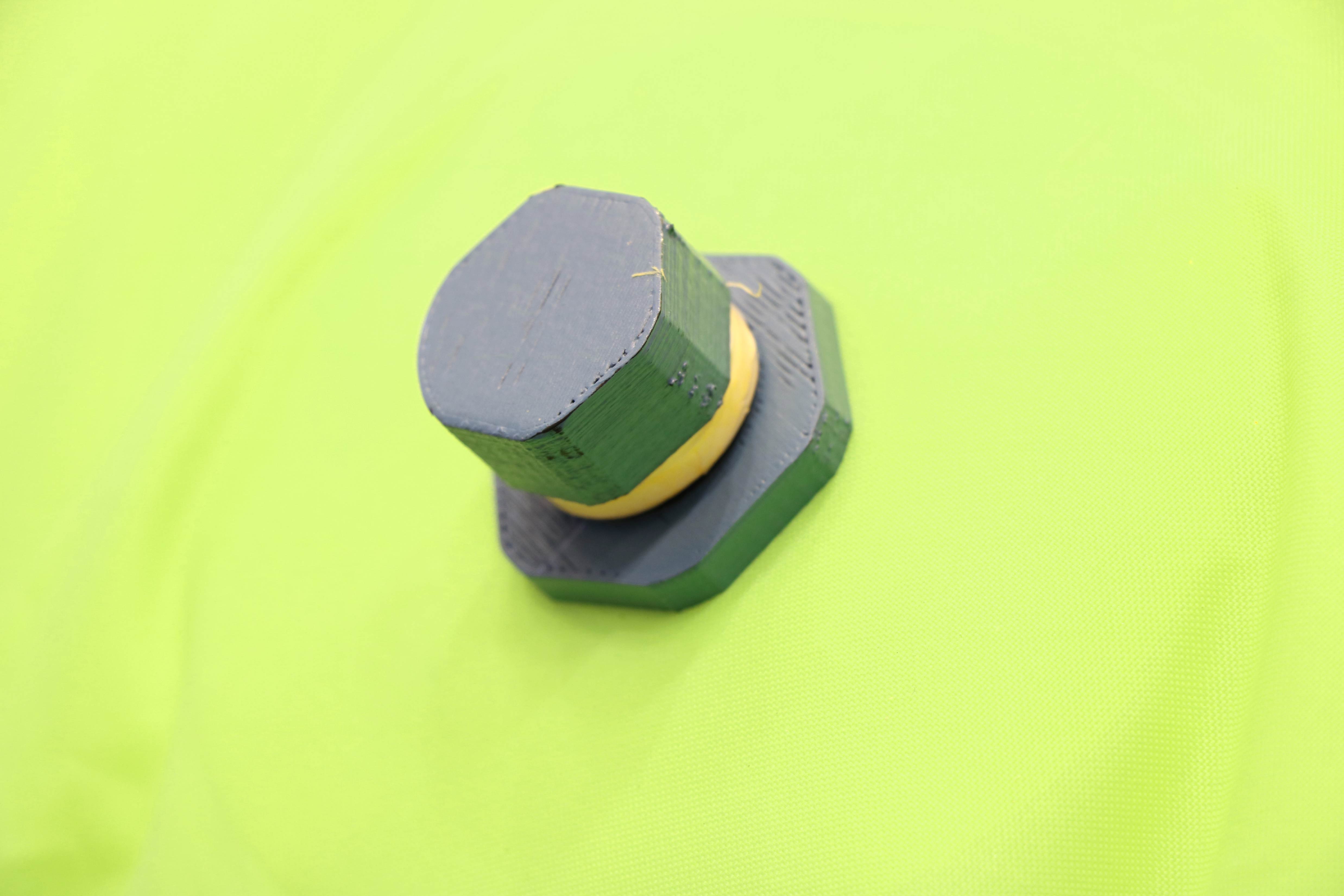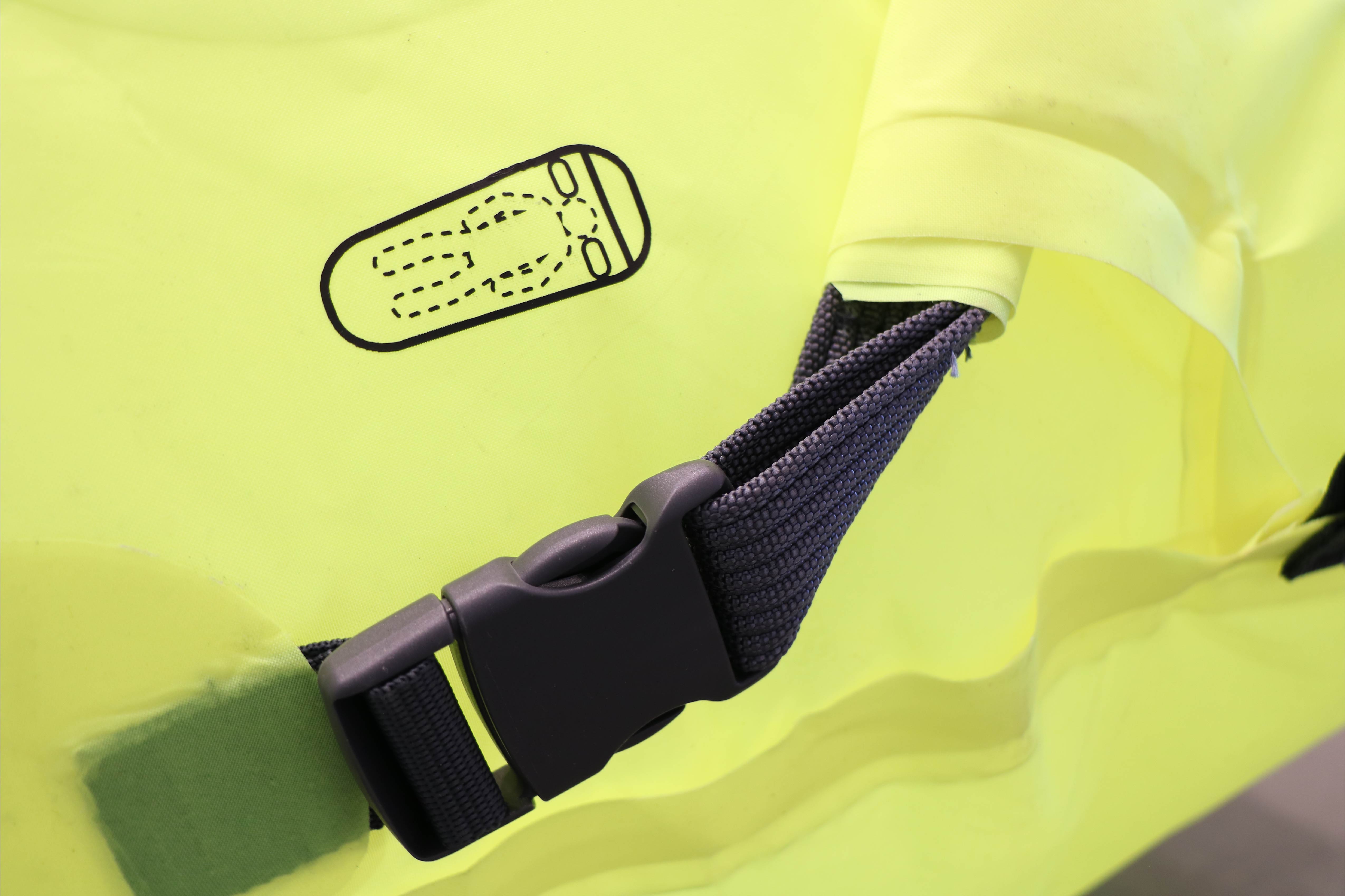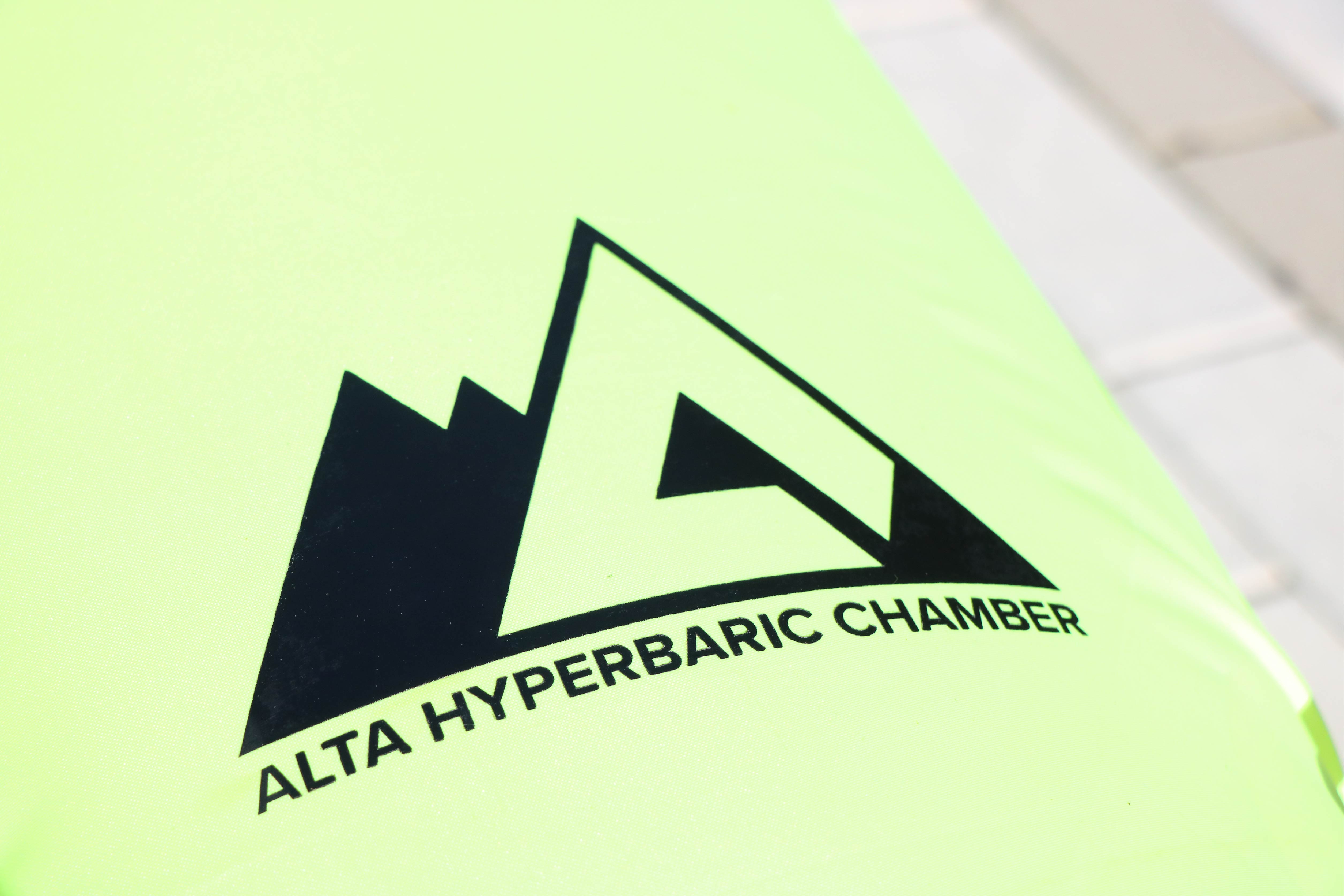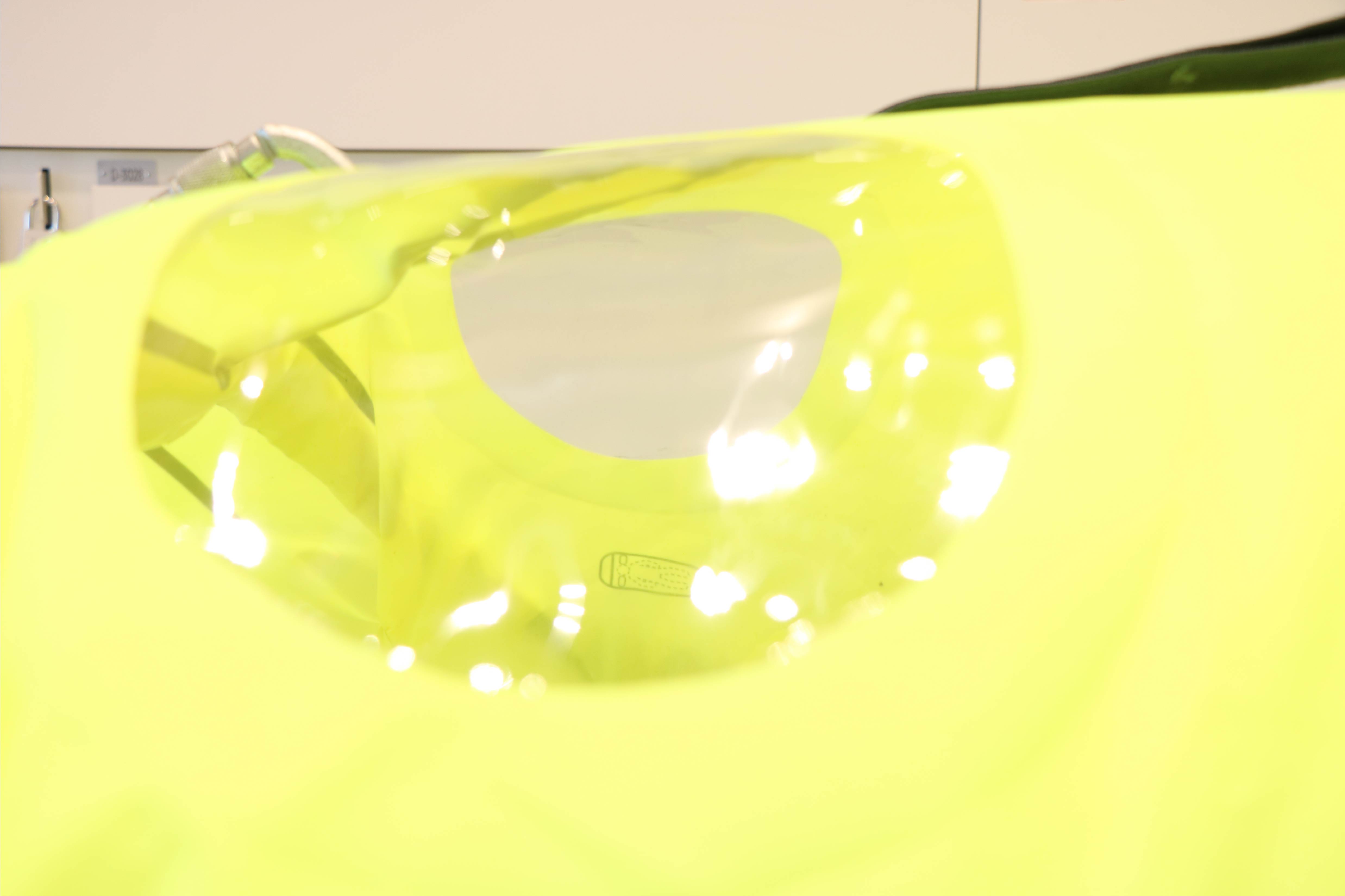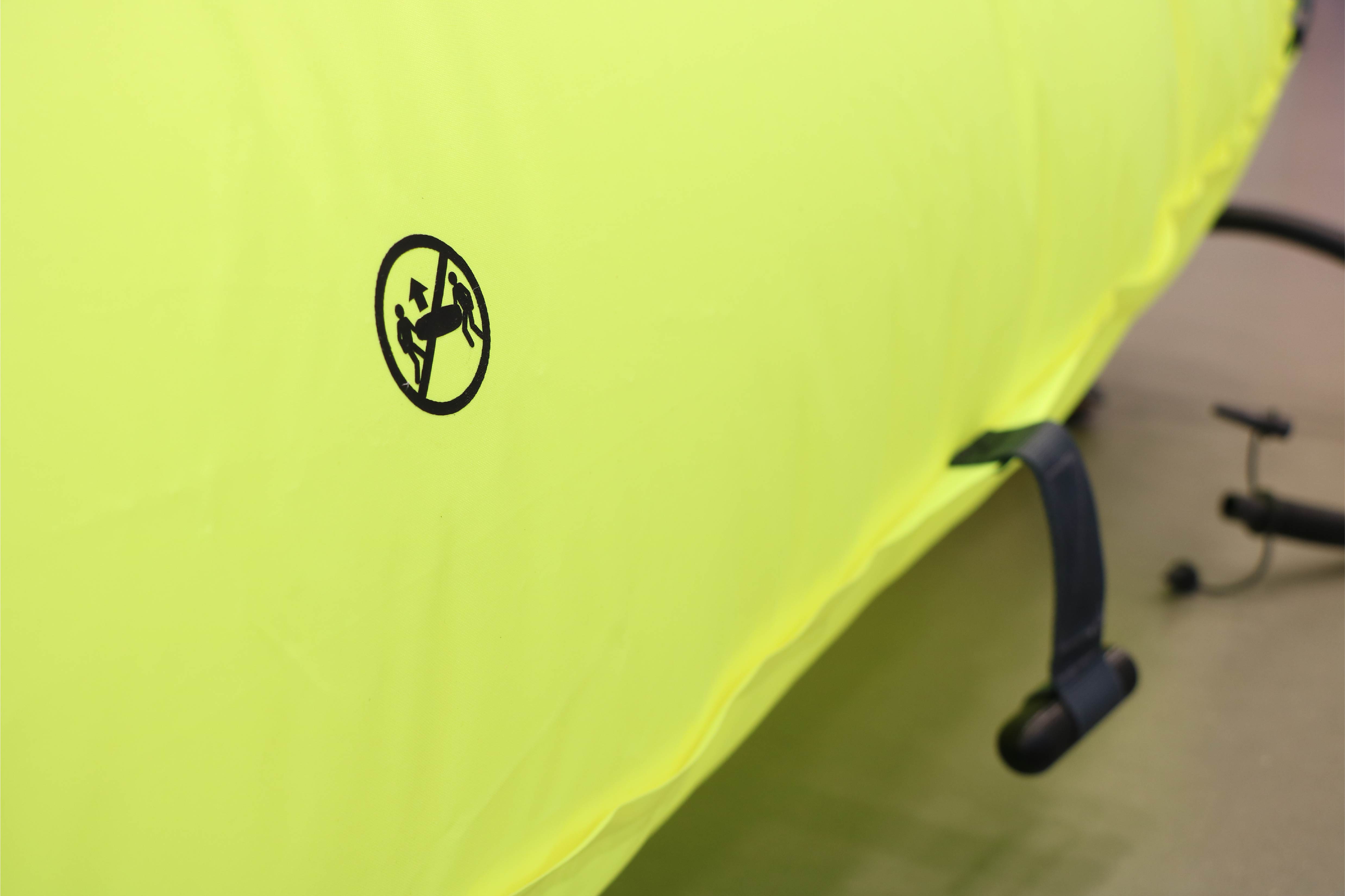ALTA
Core77 2021: Student award winner in commercial equipment.
BRIEF:
Injuries and deaths at high altitude are becoming more significant problems than ever before. With more climbers on mountains, severe cases of high altitude pulmonary edema (HAPE) and high altitude cerebral edema (HACE) are leading to preventable injuries and deaths. A hyperbaric chamber is a pressurised environment that can mitigate the severe effects of HAPE and HACE in emergency situations by simulating a descent.
The scope of this project included extensive research, conducting expert interviews, facilitating prototyping, and testing as well as the production of a final working prototype.
TEAM:
Clarissa Martins, Camille Dansereau, Morgan Munro, Yasmin Sirton, Huixian (Nimi) Chen, Birk Zukowsky, Naji Kaddoura, Mike Clarke, Xavier Drysdale, and Leah Katz
Role:
Prototyping and material testing lead
Thanks to:
Capt. Chris Dare (CAF Officer, Canadian Mountaineer), Dr. Sanja Savic (President and Safety Director, BaroMedical Hyperbaric Oxygen Clinic), Maxim de Jong (Founder and President, Thin Red Line Aerospace), Dr. Anthony Chahal (President, Canadian Society of Mountain Medicine, Emergency Medicine Expert), Wendell Uglene (Manager of Research and Technology, Mustang Survival Corporation), Elizabeth Rose (Author and Canadian Mountaineer), Dr. Steven Roy (High Altitude Medicine Expert, Remote Medical Trainer, Wilderness MD), Sue Fairburn (Professor, Wilson School of Design).
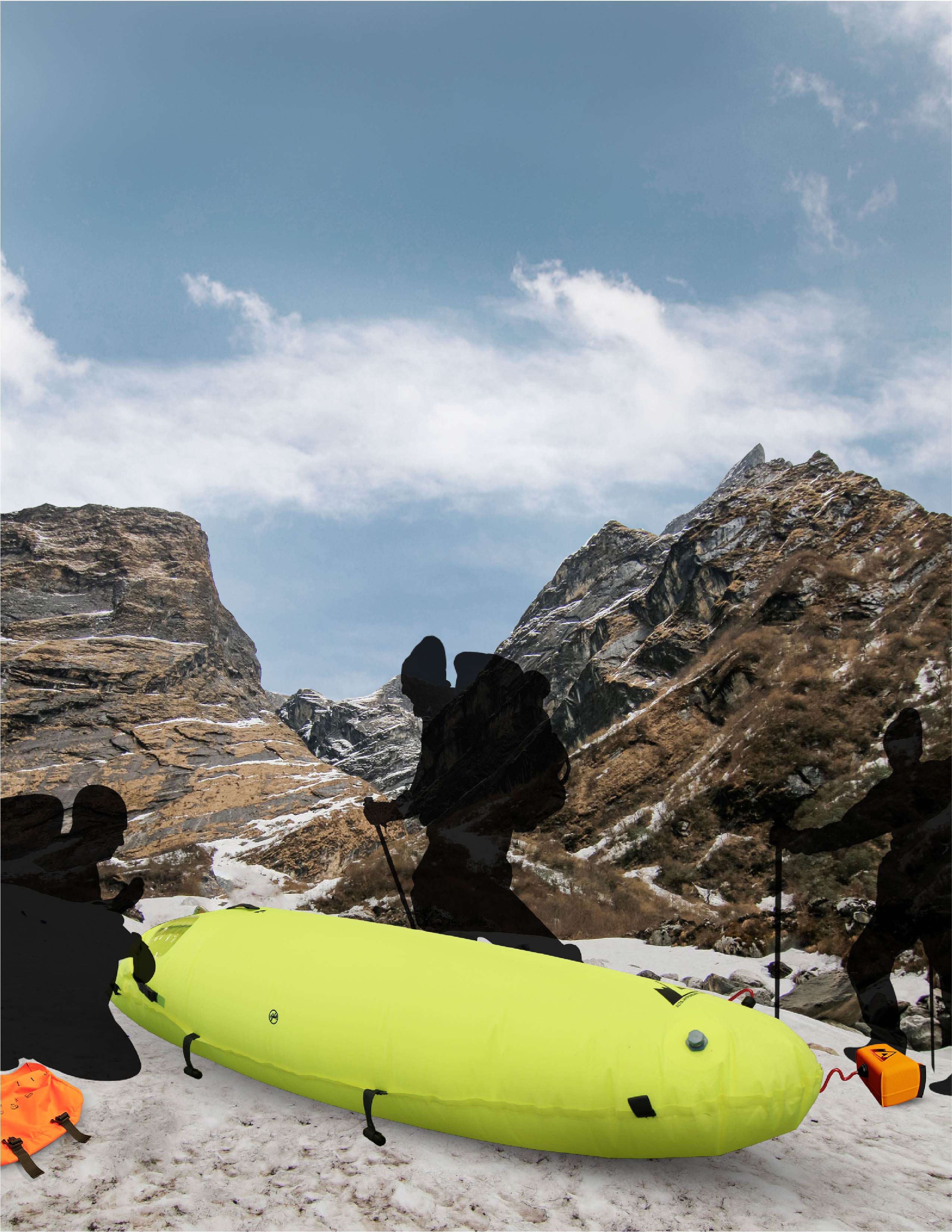
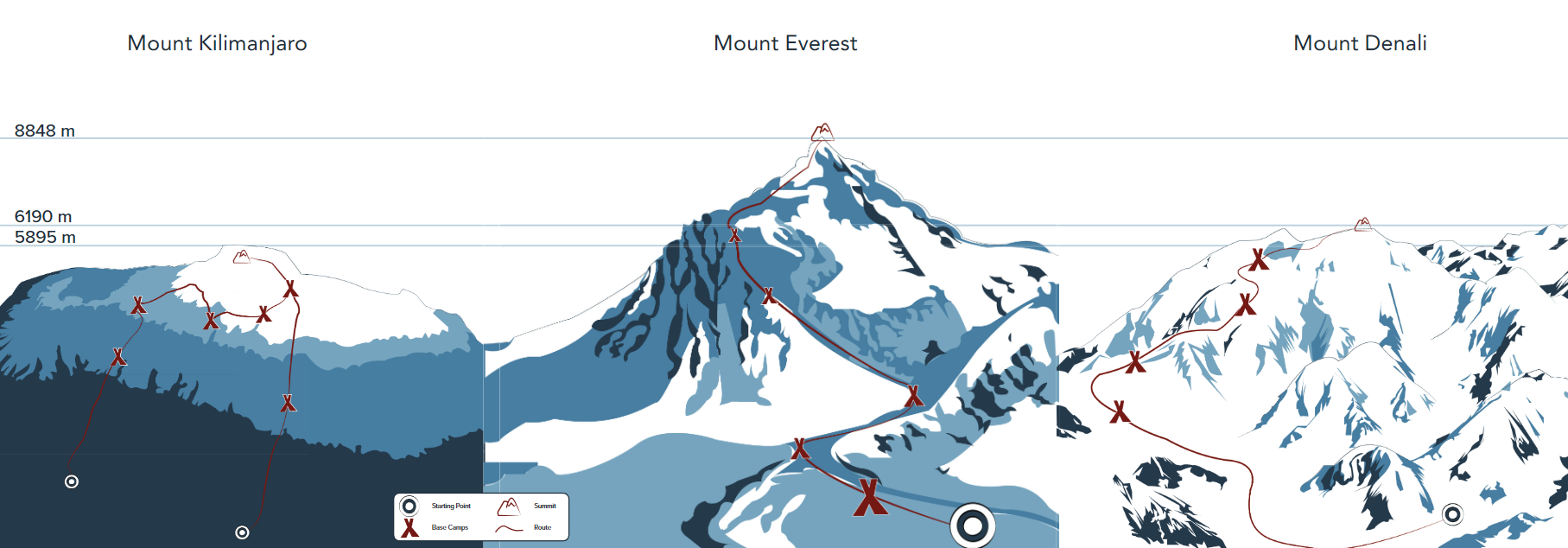
The Problem
High altitude mountaineers are daring adventurers who seek to reach the highest peaks. Mountaineers face treacherous landscapes and unpredictable weather, making preparation for climbs critical. The increasing popularity of climbing has resulted in longer wait times to reach the summit. This, combined with increasingly unpredictable weather, has resulted in inexperienced climbers rushing their ascents and leaving inadequate time for their bodies to acclimatise. When the climb is rushed, and acclimatisation has not been achieved, symptoms of HAI may set in.
The recommended treatment for HAI is always descent. When that is not possible, the use of a hyperbaric chamber can achieve similar results, reducing or alleviating symptoms until descent is possible. Existing chambers are heavy, isolate patients from outside aid, limit communication, and have been only available to trained professionals. Marketing and education has also been poor, with many climbers unaware of their existence.
Material Testing
We chose 38 initial materials for testing and weighed them each. We then tested for air and water permeability and graphed our results to decide which materials to do further testing on. We found the most important factor of material choice to be how well the coatings bonded, so we picked the materials with bondable coatings and did further testing that included abrasion, tear, and seam strength.
Our top material option for the chamber ended up being PU coated nylon, as well as clear PVC. For external, non airtight components we selected nylon ripstop.

Process
The design process behind Alta involved extensive experimentation and interviews with experts in the fields of mountain medicine, inflatables manufacturing, and hyperbaric oxygen therapy. Early stages included broad academic research and multi-stage material testing. The team also met with accomplished mountaineers to understand the complications of high altitude climbs.
Once the groundwork had been laid, ideation began with sketching and quarter scale three-dimensional prototypes. It was quickly discovered that the most challenging part of prototyping was making a structure completely airtight. This led to further material and construction testing, until the prototypes could be reliably inflated to the required 2 psi. Prototypes were evaluated at every stage and assessed for form, function, and design features using a design evaluation matrix. The information from these tests influenced the resulting prototypes and design direction.
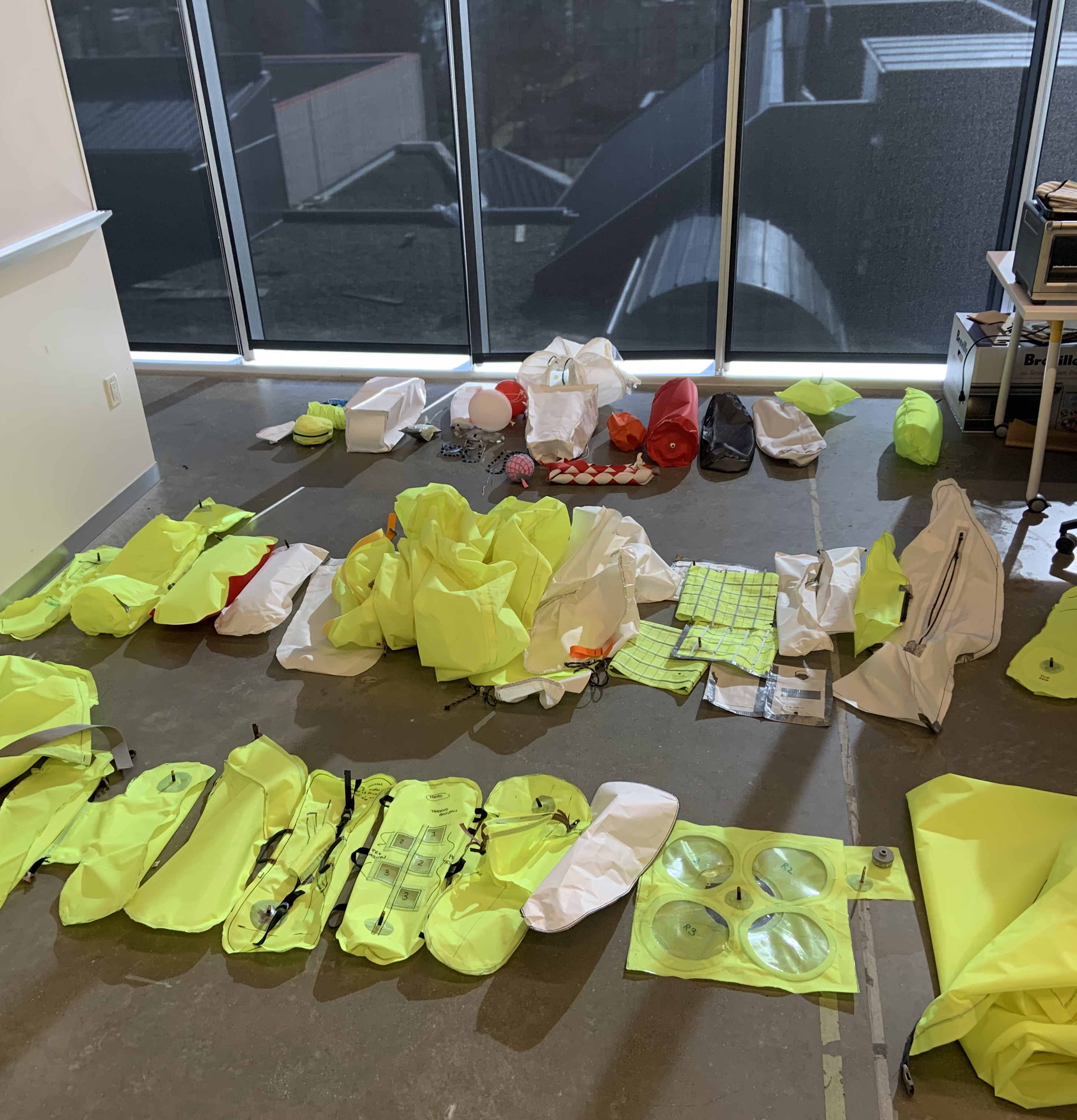
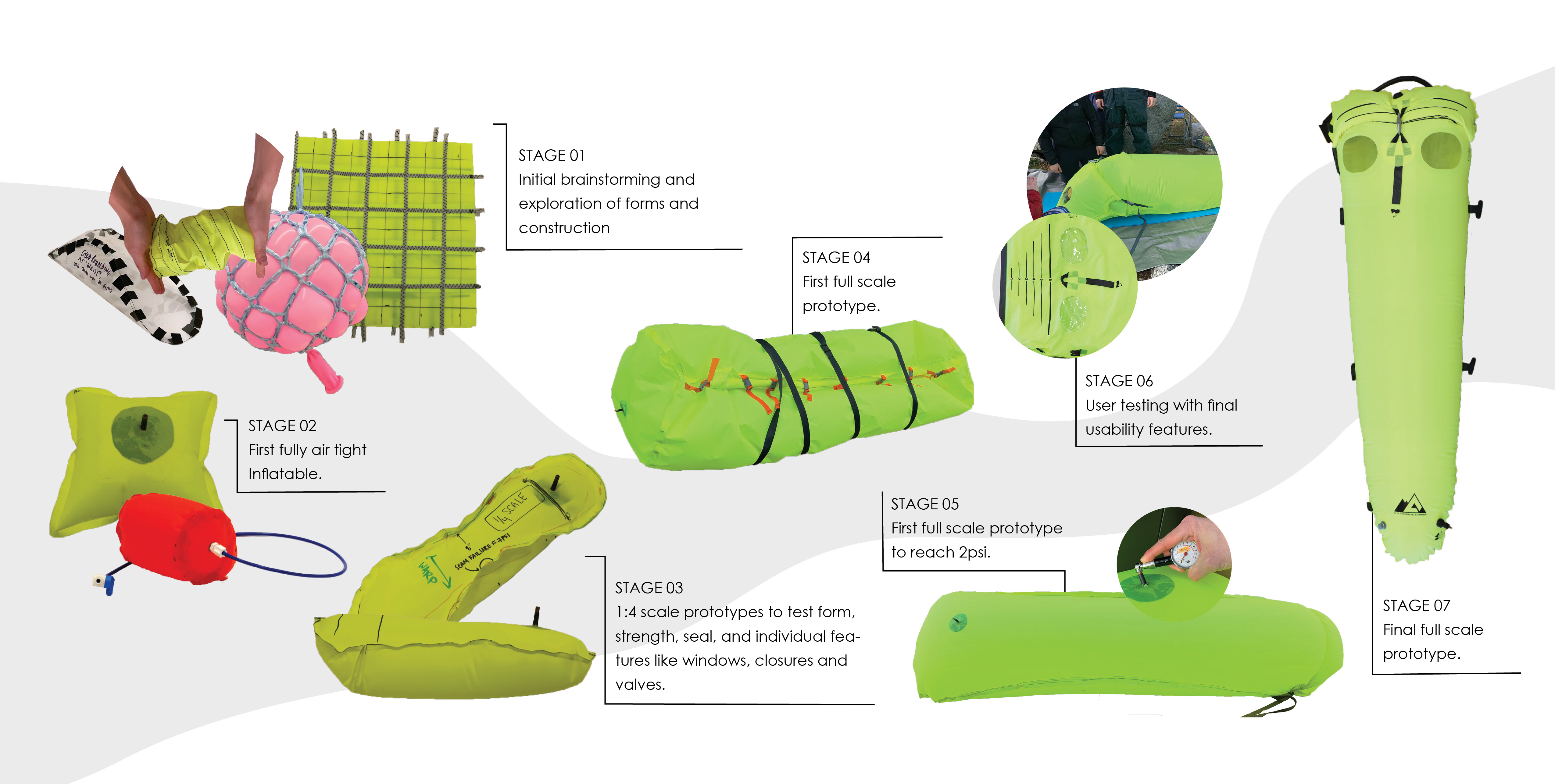
User Testing
Once confident in the construction method at quarter-scale, full-scale prototypes were created, which allowed for user testing. Prototypes needed to fulfil our functional requirements including: airtight construction, patient access, durability, portability, and ease of operation. Testing of near-final prototypes was conducted both in a controlled indoor setting, as well as in the field, which provided key insights that informed the final design. Upon testing the final prototype, users agreed on a number of key points. The chamber was easy to set up, simple to inflate, and the roll top was intuitive to use. The acting victim found the interior to be spacious and communication through the chamber was effective.
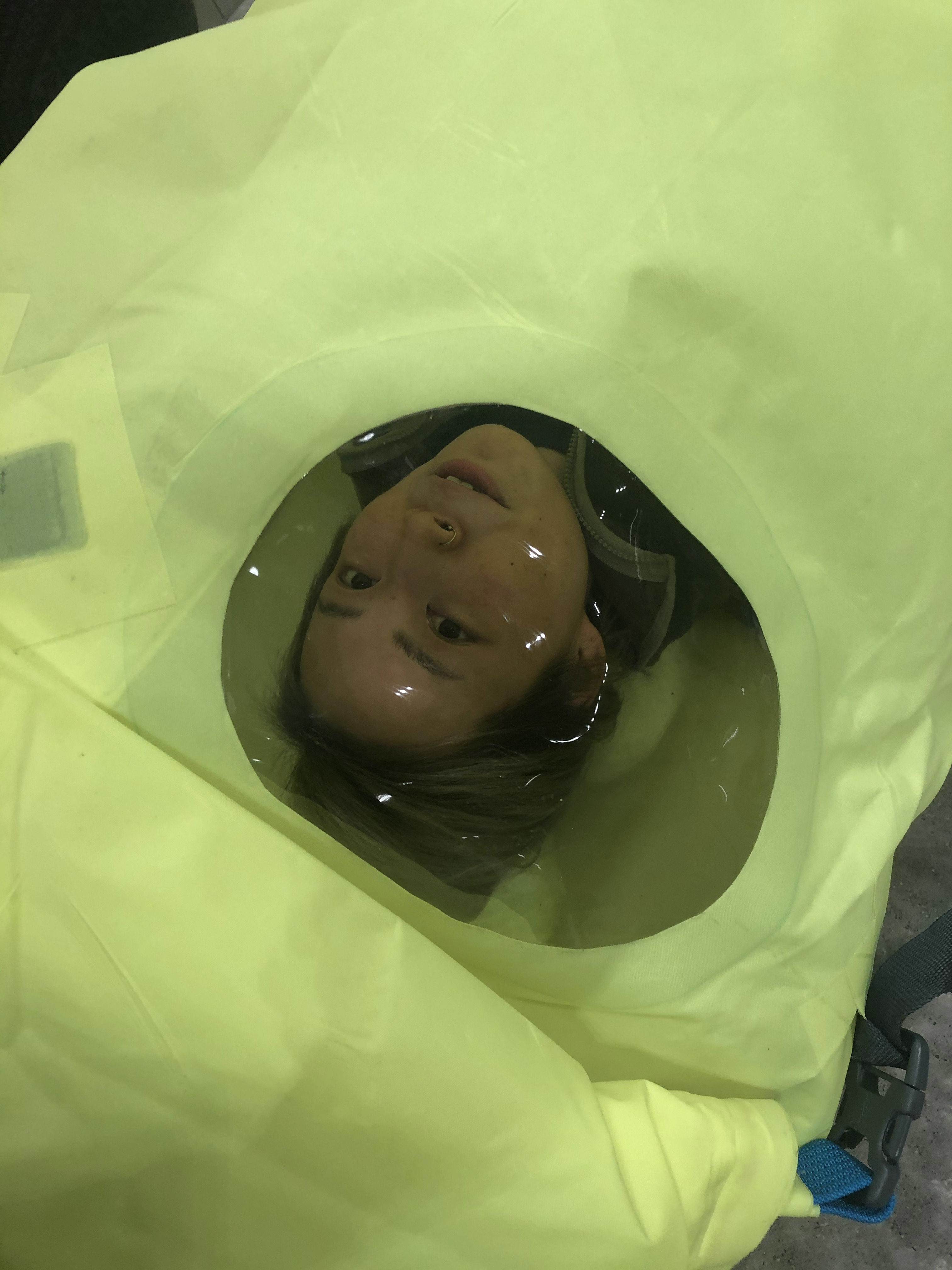
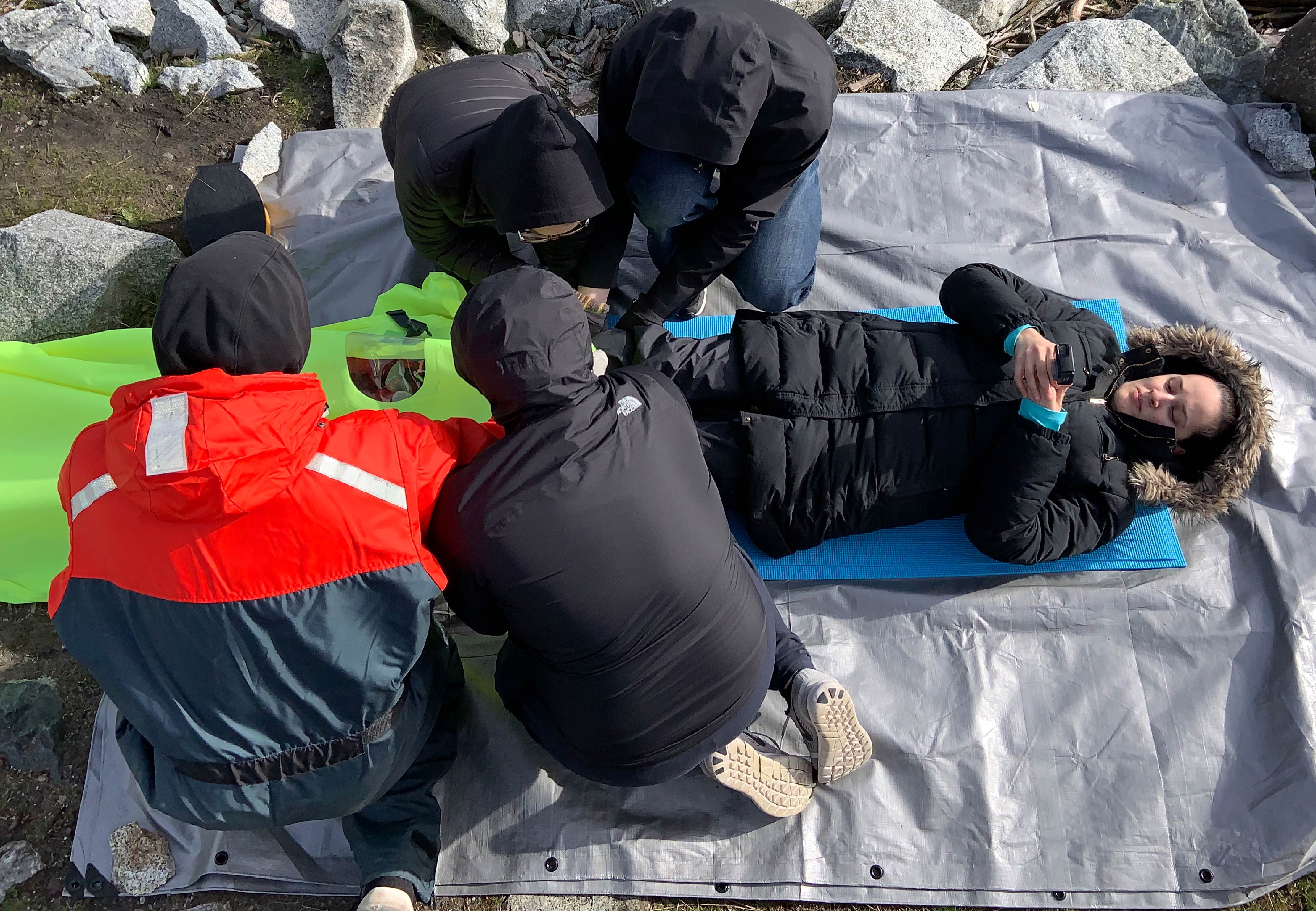
Final Design
Alta is a lightweight and portable hyperbaric chamber for use in high altitude. At a total system weight of only 5.12 lbs, Alta is 2.58 lbs lighter than the Ultra-Lite Gamow bag, the lightest on the market. This allows recreational mountaineers and guides to comfortably carry it with them on expeditions. It has been designed to be the easiest chamber to use and operate to decrease the number of deaths occurring in the field.
With Alta we were able to reduce weight by removing the heavy zippers that are standard in hyperbaric chamber design. Zippers are the most common failure point in the design, often requiring expensive replacement or repair. In our design, we moved away from this failure point and replaced it with an equally secure and lighter weight solution of a roll-top closure.
